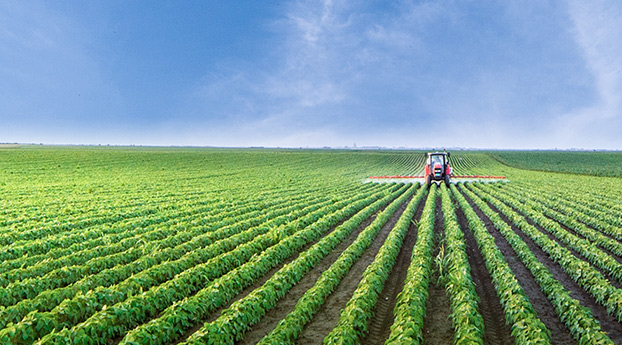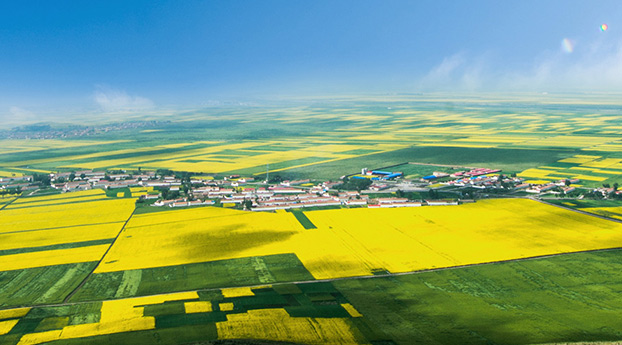Study on mechanism and application of Canna generalis in purifying farmland denitrification in simulated wetland system
Release time:2015-01-01 Views:79
【作者】 吴文卫;
【导师】 李昆志;
【作者基本信息】 昆明理工大学 , 环境生物学, 2016, 博士
【摘要】 随着集约种植业的快速发展,农田漫灌或暴雨冲刷形成大量富含氮磷等营养物质的农田退水,通过地表径流及地下渗透淋失进入地下水和江河湖泊等水体中,加剧了水体富营养化进程,制约了农业可持续发展。氮素作为植物生长不可或缺的营养物质,因氮流失所导致的农业面源污染是当前亟需解决的环境问题之一。本论文基于前人研究基础上,构建“植物—基质—微生物”模拟湿地系统来净化农田退水中硝态氮,系统地研究了利用水生美人蕉(Canna generalis)构建湿地系统处理农田退水效果、相关微生物群落结构、美人蕉净化农田退水硝态氮的机理以及通过数学模型来优化水生美人蕉的脱氮效果,并基于模拟模型净化农田退水的参数及前人的研究成果,建设农田退水处理示范工程,检验人工湿地模型净化农田退水效果,以期为同类型污染水体的治理提供理论依据与技术支撑。本论文取得的主要研究成果如下:(1)分析了美人蕉净化农田退水能力和吸收代谢利用硝态氮特点。研究表明美人蕉湿地系统处理农田退水,当水力停留时间(HRT, hydraulic retention time)为1d时,N03--N的去除率为50.80\%。将美人蕉置于装有农田退水的盆中7天后,其鲜重增长率15.37\%,根、茎、叶中的N03--N含量高于蒸馏水处理的对照,说明美人蕉能快速吸收利用农田退水中的NO3--N。13C-NMR分析证实美人蕉根和茎将N03--N同化为N-转运氨基酸的能力较强,而叶片将NO3--N同化为N-转运氨基酸的能力较弱。农田退水处理显著增加美人蕉植株根、茎和叶片中三磷酸甘油酸、蔗糖、葡萄糖和果糖的含量。说明美人蕉能够吸收净化农田退水中的硝态氮并加以利用促进生理代谢和生长。(2)利用PCR-DGGE技术分析种植美人蕉的复合垂直流人工湿地串联表流人工湿地处理富营养化农田退水后湿地基质和水样中微生物群落结构的差异及其优势菌群。结果表明,在复合垂直流人工湿地和表流人工湿地系统的不同基质中,既有共同的微生物种属存在,也有各自独特的微生物种属存在,在不同泳道的相同位置其微生物数量不同,每个泳道其优势菌群及其所占的比例也不同;在PCR-DGGE分析细菌群落及结构多样性中,种植美人蕉的湿地中和对照的湿地系统中碎石和水样的OTU(分类操作单元)数目都较陶粒和沸石多,每个OTU挑选3个克隆进行序列测定,共得到69个序列,在69个序列中57个序列经序列比对为未培养的细菌,仅有12个序列为大肠杆菌(Escherichia coli)、假单胞菌(Pseudomonas sp.) 、食酸菌(Acidovorax sp.)和泛菌属(Pantoea sp.);在PCR-DGGE分析真菌群落及结构多样性中,美人蕉人工湿地中,陶粒、沸石、水样的OTU数目较碎石多,在未种美人蕉的湿地中,碎石和陶粒OTU数目较沸石和水样多,每个OTU挑选3个克隆进行序列测定,共得到39个序列,包括12种酵母菌和27种霉菌。(3)以美人蕉根部为实验材料,通过转录组测序分析美人蕉净化富营养化农田退水硝态氮的分子机理。结果表明,农田退水处理后的美人蕉根部(MF)和未经农田退水处理的美人蕉根部(MZ)分别获得27152829和34073843个原始序列。总共获得65535个Unigenes基因分别注释到7个数据库中,Unigenes注释成功最多的为GO和NR数据库,所占比例分别为61.42\%、58.60\%。MF和MZ样品之间以qvalue<0.005和log2(foldchange)>1作为基因表达差异标准,共筛选出326个差异基因,220个基因表现出上调表达,106个基因表现出下调表达。为了更全面的分析基因表达,用GOseq的方法将显著差异基因分配到不同的功能聚类中。在MF和MZ样本中(q值<0.005),251个显著差异表达的基因被分配到GO的生物过程、细胞组分和分子功能的三个大类中。在MF和MZ中,差异表达基因被分配到63个KEGG通路中,在这些通路中,最具有代表性的是包括52个基因的代谢途径(ko01100)以及包括23个基因的次级代谢产物生物合成途径(ko01100)。荧光定量PCR表明,农田退水处理4d后,美人蕉根中ATP2B4, Ta14-3-3, PR-1 GS1.a, Ca2+-ATPase均表现出上调表达;NR, Gh14-3-3表现出下调表达。荧光定量PCR结果验证了转录组测序的正确可靠性。(4)为了研究人工湿地系统有效快速净化农田退水,对系统施用具有促进植物生长和被微生物作为碳源利用的甲醇,采用响应面的方法,通过设置甲醇的浓度、硝态氮浓度及处理时间等影响湿地脱氮的几个关键因素进行试验研究,以探讨美人蕉在湿地系统中吸收N03-的最佳组合条件。结果表明,响应面优化设计美人蕉吸收硝酸根离子是实际可行的。根据响应面优化和二项式回归方程分析得到美人蕉吸收硝酸根离子的优化条件为:甲醇预处理浓度为2.75mM(预处理时间6h),硝酸根离子浓度为38mg/L,处理时间为4h。在此优化条件下,美人蕉吸收硝酸根离子的量为0.061 mg/(L·g)FW,与预测值0.062 mg/(L·g)FW相符,说明所建立的模型的模拟值是可以采纳的。同时测定相同条件下无甲醇预处理的NO3-吸收,硝酸根离子吸收值为0.047 mg/(L·g)FW,说明甲醇预处理可以明显促进美人蕉对硝酸根离子的吸收。(5)基于温室内模拟人工湿地系统构建的相关参数及美人蕉的净化机理,结合杞麓湖流域六一片区农田退水硝态氮含量高、低有机质、水量大等特征,在六一牛角坝塘处设置建立人工湿地系统处理农田退水示范工程。通过长期野外跟踪监测试验,从水质净化、植物生理形态变化特征等方面系统地评价人工湿地系统中水生美人蕉净化农田退水硝态氮的效果。研究结果表明示范工程对TN、 NO3--N、 NH4+-N、 COD、 TP的平均去除率分别为55.94\%、50\%、40.07\%、60.63\%、40\%。在强化沉淀塘工序中,COD的削减比较明显,其次为TN与TP,而多级人工湿地渗滤系统对各污染物质均有较明显的去除效果。美人蕉的基部底茎、分蘖、株高、冠幅增加率分别为50.8\%、78.9\%,85.7\%、61.5\%。美人蕉吸收同化全氮和全磷量随着生长时间的增加而逐渐增加,且美人蕉体内氮和磷的含量通过收割将其移除。
【Abstract】 The rapid development of intensive farming, flood irrigation and rain erosion forming a large number of agricultural return flow contained the rich nitrogen, phosphorus and other nutrients, which enter groundwater and rivers, lakes and other water bodies through the surface run off and underground penetration leaching, promote the water bodies eutrophication process and restrict the sustainable development of agriculture.Nitrogen is an essential nutrient for plant growth. Agricultural nonpoint source pollution due to nitrogen loss is caused by one of the current needed to solve environmental problems. Based on previous studies, this paper constructed the "plant-Matrix-microorganism" of simulated wetland system to purifying NO3--N of agricultural eutrophic wastewater, systematic study on the use of Canna generalis constructed wetland system for the effect of treating agricultural eutrophic wastewater, associated microbial community, the purification mechanism of NO3--N of agricultural eutrophic wastewater and to optimize nitrogen removal through Canna generalis by mathematical model, and based on the parameters of purifying agricultural eutrophic wastewater by simulation model and previous research, construction demonstration project of agricultural eutrophic wastewater testing the effects of constructed wetland model which is purification agricultural eutrophic wastewater to provide a theoretical basis and technical support for the management of the same type of contaminated water.(1) Analysis of the purified Canna generalis agricultural eutrophic wastewater capacity utilization and metabolism of nitrate absorption characteristics. The results shown that treatment Canna generalis agricultural eutrophic wastewater 7d, nitrate removal rate of 61.70\%, fresh weight increase of 15.37\%; roots, stems, leaves NO3--N were higher than the control treated with distilled water, indicating Canna generalis rapid absorption and utilization of nitrate in agricultural eutrophic wastewater.13C-NMR analysis show that the ability of roots and stems of Canna generalis to assimilate the NO3- to N-transported amino acids was strong, but the contents of N-transported amino acids in the tissues of blades are greatly reduced. A significant increase glyceraldehyde 3-phosphate acid, sucrose, glucose and fructose content of roots, stems and leaves of Canna generalis in agricultural eutrophic wastewater. Description Canna generalis capable of absorbing purification nitrate in agricultural eutrophic wastewater and exploited to promote physiological metabolism and growth.(2) Technical analysis of the use of PCR- DGGE planting Canna generalis vertical flow constructed wetland table series flow constructed wetland treatment differences and advantages of bacterial community structure matrix wetlands and water samples Microbial retreat after eutrophication farmland. The results suggested that there are not only microorganisms but also various bacterial taxonomies found in the IVCW-Surface Flow Artificial Wetland matrices. The quantity and proportion of different microorganisms differ among different lanes. In the analysis of PCR-DGGE on structural diversity and community of bacterial, the number of gravels and OTU of water sample is lager than it of haydites and zeolites, in the comparison of wetlands with Canna and the ones without. Choosing three clones from every OTU and sequencing them, the result turns out to be 69 series. Through sequence alignment,57 series out of 69 series are uncultured bacteria. Only 12 of them are Escherichia coli, Pseudomonas sp, Acidovorax sp, and Pantoea sp. In the analysis of PCR-DGGE on structural diversity and community of fungi, the OTU number of gravels and haydites is larger than that of zeolites and water samples. Choosing three colones from every OTU and sequencing them, the result turns out to be 39 series. Among them, there are 12 kinds of yeasts,27 kinds of moulds.(3) Using the roots of canna, analyze the molecular mechanism of canna purifying NO3--N of wastewater. The result proves that the nunber of original series of agricultural wastewater pretreated canna roots is 27152829, while the number of untreated ones is 34073843. There are 65535 Unigenes in total are annotated in to 7 databases separately. The most successfully annotated databases are GO database and NR database. Their propotions are 61.42\%(40250) and 58.60\%(38401) separately. There are 326 differential genes selected from MF and MZ samples and 220 of them are up-regulated expression while 106 of them are down-regulated expression. In order to get a more complete gene expression, differential expressed genes are separated into different functional clusters through the method of GOseq. Among MF and MZ samples whose q is below 0.5 and log2 (fold change)>1,251 differential expressed genes are separated into three main classes namely biological process, cellular component, and molecular function. Among MF and MZ, differential expressed genes are separated into 63 KEGG pathways. In these pathways, the most representative ones include 52 metabolic pathways of gene (ko01100) and 23 synthesis of secondary metabolites of genes(ko01100).The result of PCR shows that after four days of agricultural-wastewater pretreatment,the ATP2B4, TA14-3-3, PR-1, GS1.a and Ca2+-ATPase of canna roots are all up-regulated expression while NR and Gh 14-3-3 are down-regulated expression. Results quantitative PCR amplification verify the correct reliability transcriptome sequencing.(4) In order to study constructed wetland system to effectively purify farmland rapid withdrawal of water, the system is administered with the promotion of plant growth and the use of methanol as a carbon source of microorganisms, response surface method, by setting affects the concentration of methanol, nitrate concentration and treatment time experimental study of several key factors in the wetland nitrogen removal in order to explore Canna absorb NO3-N in the wetland system the optimal combination of conditions. The result shows that the optimizing design through response surface way is practicable. The optimizing conditions of canna absorbing Nitrate ions obtained from the response surface optimization and the analysis of Binomial regression equation are:pretreating the roots of canna with 2.75mM methanol for 6h,and pretreating the roots of canna with 38mg/L Nitrate ions for 4h. Under this condition, the amount of Nitrate ions that canna absorbs is 0.061 mg/(L-g)FW, which matches the predictive value 0.062 mg/(L-g)FW. These results indicate that the model’s simulation value is adoptable. We can also test the absorption without the pretreatment of methanol at the same time, and the absorbing value of Nitrate ions is 0.047 mg/(L-g)FW, which indicates that the methanol pretreatment obviously improved the canna’s absorption of Nitrate ions.(5) Analog purification mechanism of constructed wetland system parameters and greenhouse Canna based Qilu basins sixty-one combined area of high agricultural return water nitrate content, low organic matter, and other large water feature, pond dam in sixty-one horns at setting an artificial wetland treatment system withdrawal farmland water demonstration project. Tracking and monitoring through long-term field test, from water purification plant physiology changes characteristics systematically evaluated in terms of artificial wetland system aquatic Canna water purification farmland back nitrate effect. The results show that the demonstration project for TN, NO3--N, NH4+-N, COD, TP average removal rates were 55.94\%,50\%,40.07\%,60.63\% and 40\%. In the process of strengthening precipitation pound, the decrease of COD is quite obvious, followed by TN and TP. While the multiple infiltration system has obvious removal effect on all kinds of pollution. Canna bottom diameter, tillers, plant height, crown rate of increase is 50.8\%, 78.9\%,85.7\%,61.5\%. The contents of nitrogen, total pnosphorus and organic matters increase with the canna’s growth, and the pollution load decreases by harvest.
【关键词】 农田退水; 硝态氮; 水生美人蕉; 微生物多样性; 转录组分析;
【Key words】 Farmland drainage; NO3--N; Canna generalis; Microbial diversity; Transcriptome analysis;

















